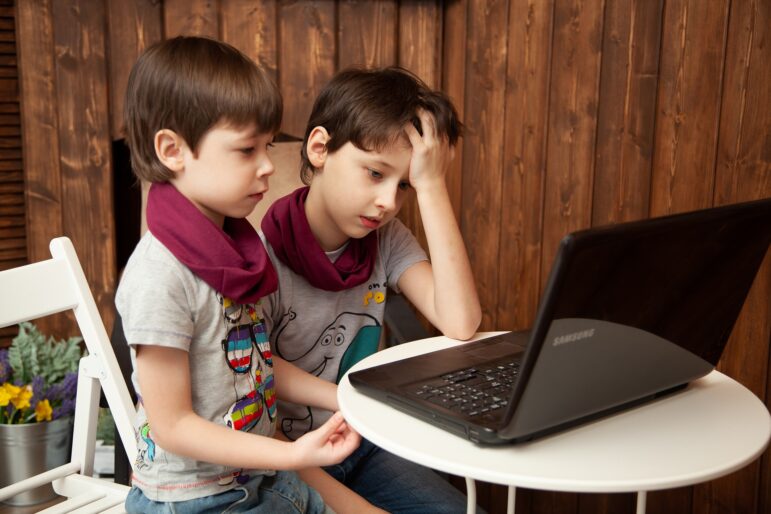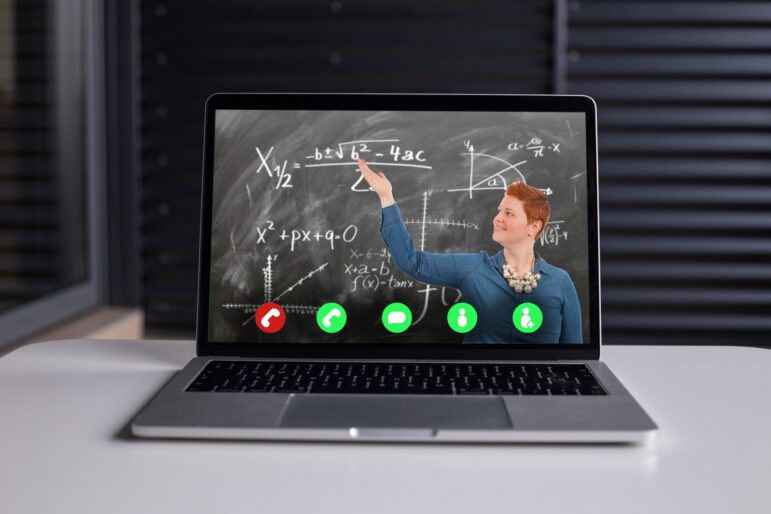
Victoria Borodinova
Sept. 8 marks the date for K-12 students at TPS to log on to their virtual classrooms, remote learning could be mandatory for as long as the entire first semester.TOLEDO — Creating an online educational option equal to an in-classroom environment is proving troublesome for Toledo Public Schools.
“To say my things are upside down in my life is an understatement,” said Patricia Mazur, director of communications for TPS. “Virtual schools cannot fully resemble in-person schooling.”
Amidst the worsening COVID-19 pandemic, TPS has announced that “up to the entire first semester” will be taught 100% remotely, offering virtual “e-schooling” from grades K-12. However, fully online-based education has been criticized by some students, teachers and the most recent Ohio-centered, academic research projects.
“I’m not a big supporter of online school due to my past experience with many students not being successful,” said Debbie Kerner Wall, who’s been teaching at Chippewa Valley High School for over 20 years. “Online [schooling] is not for many due to the self motivation needed and due to the rigor of working independently. Many students do better with live teacher interaction and hands on experience.”
While TPS states on its district website that “state licensed and credentialed educators will teach live each day,” the most recent research on the topic states “student-teacher interaction may be limited.”
The decision to shift into 100% remote education came from TPS during the first days of August after concluding that most of Toledo and Lucas County are currently under a “Red Light” status. The Red Light status, TPS’s website said, indicates “the most severe conditions are present” in reference to the continuing rise of local COVID-19 cases.
“The board has made its decision based on the current health conditions present in Lucas County,” said Mazur.
Following a drop in the spread of local COVID-19 cases, TPS could potentially be lowered to “Yellow Light” status and return to its initial 2020-2021 academic plan consisting of reduced time in schools.
During yellow light status, students would have the option to remain 100% virtual or adhere to an A/B scheduling system which sees students breaking into two groups and attending school twice a week in said group. Additionally, one day a week all schools would be closed to students for deep cleaning.
In a video uploaded by TPS, Superintendent Dr. Romules Durant addressed some of the concerns regarding remote learning and said once deemed safe, the district would revisit hybrid learning options.
“As you all know, there is no right way or right answer here,” said Dr. Durant. “At the end of the day we had to make the decision for what’s best and most safe for our students as well as our staff.”
Research findings
In 2017, researchers Julie Ahn and Andrew McEachin collected data from the Ohio Department of Education including the standardized testing scores for all 1.7 million students in the state, containing approximately 35,000 virtual students.
The following conclusions were made within the scholarly article, Student Enrollment Patterns and Achievement in Ohio’s Online Charter Schools, based on the Ohio Graduation Test scores for all students from 2014-2017.
- Our results show that students in e-schools are performing worse on standardized assessments than their peers in traditional charter schools and traditional public schools. (44)
- Performance of students in e-schools is considerably lower than peers in traditional charter schools and traditional public schools. (45)
- Recent studies of online course taking also suggest students in online settings learn less than traditional students. (45)
- E-students score 14 percentage points lower in all subjects [on average] on high school Ohio Graduation Tests. (48)
- All e-students perform worse than their peers with similar prior achievement. (49)
- It may be likely that asking students to work independently work through curriculum online imposes heightened stresses on students such as the need to self-regulate learning. (55)
- Online schools, in its current form as a largely independent learning experience, are not effective for K-12 learners. (55)
Additionally, while comparing OGT scores of individual subjects between 10th graders of traditional public schools and e-schools, within every subject, public school students who pass do so at a higher rate than e-students who pass.
Ahn and McEachin effectively concluded that e-students test worst in every individual subject when compared to their counterpart representatives attending traditional public schools. The lower academic achievers of e-school do worse than he lower academic achievers in public schools and so forth.
Without a change in form, Ohio’s virtual schools in their current status have been statistically analyzed and labeled “not effective for K-12 learners.”
Student/teacher response
“Online school also takes away the social aspects for students,” said Kerner Wall. “It’s very important for students to make friends, learn to get along with others, problem solve and most importantly enjoy the fun activities school offers.”
For some students, online schooling is not a preferred option due to both social and academic concerns.
“I think online schooling really takes away the knowledge you gain from being in a classroom with another human being,” said Sam Washington, a 16-year-old sophomore who has spent his K-10 education at TPS. “For me, it’s a lot harder trying to focus on work when it’s online.”

Jargit Parajuli
TPS has assured its virtual schooling will be taught live by state licensed and credentialed educators.Beyond the educational side of things, virtual schools also open questions for student athletes and clubs. TPS states on its district website that e-students “are eligible for school sports and extracurricular activities at their home school” but some students have raised concerns.
“We can’t go to school five days a week but we still can practice football everyday?” said Maverick Miller, 17-year-old junior and footballer for Bowsher High School. “I mean, I’m not complaining! But there is just no way you can get a whole team to wear masks outside during practice. It’s too hot, it’s not possible.”
TPS offered no comment on how to maintain proper social distancing protocol during athletic practices or during future games. Some students, like Miller, are hoping for TPS to be lowered to a yellow light status in order to get back in the classroom.
“Two days of school a week sounds great to me,” said Miller who will be opting into TPS’s limited in-person system once made available. “I still get the classroom vibe and still get to play football every day, seems like a major win-win to me.”
Though for some future e-students, the outlook is not so optimistic.
“I’m worried about going to virtual school,” said Washington. “Unless it’s totally different than it was at the end of last semester, my grades are gonna suffer. Plus, I’m gonna miss seeing my friends in between classes.”
TPS’s first day for the incoming academic year has been pushed back to Sept. 8 when the K-12 remote learning will commence.